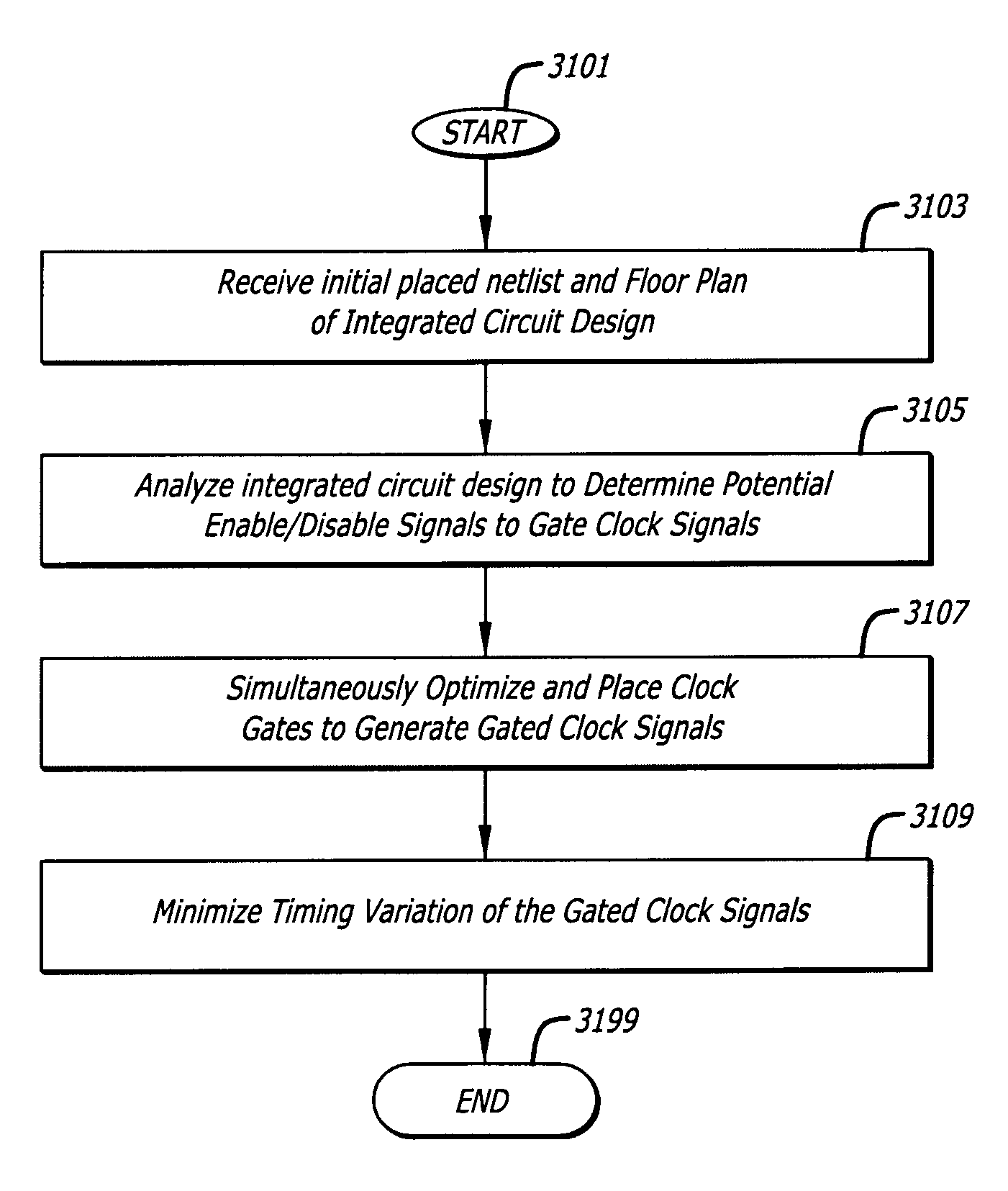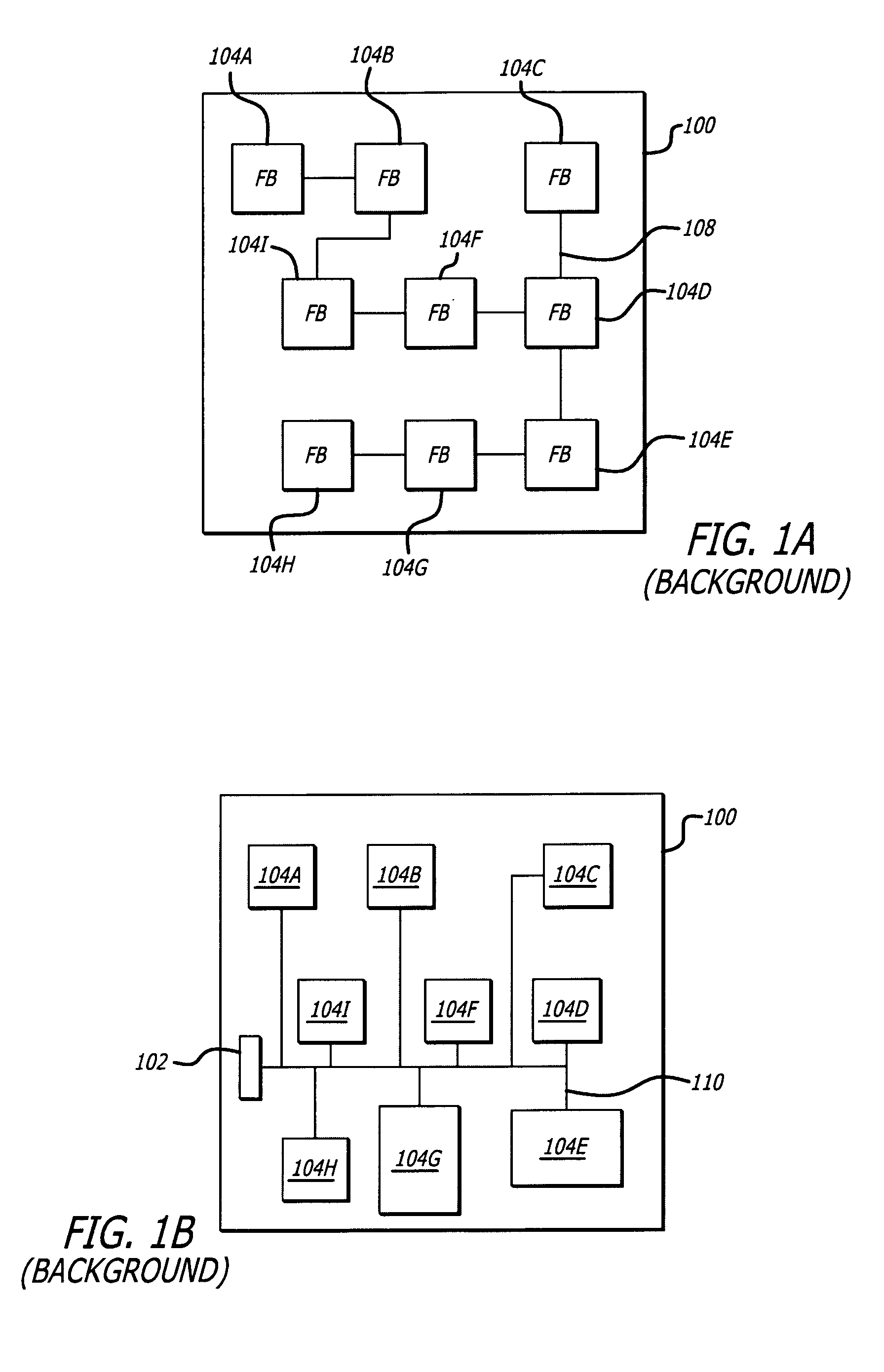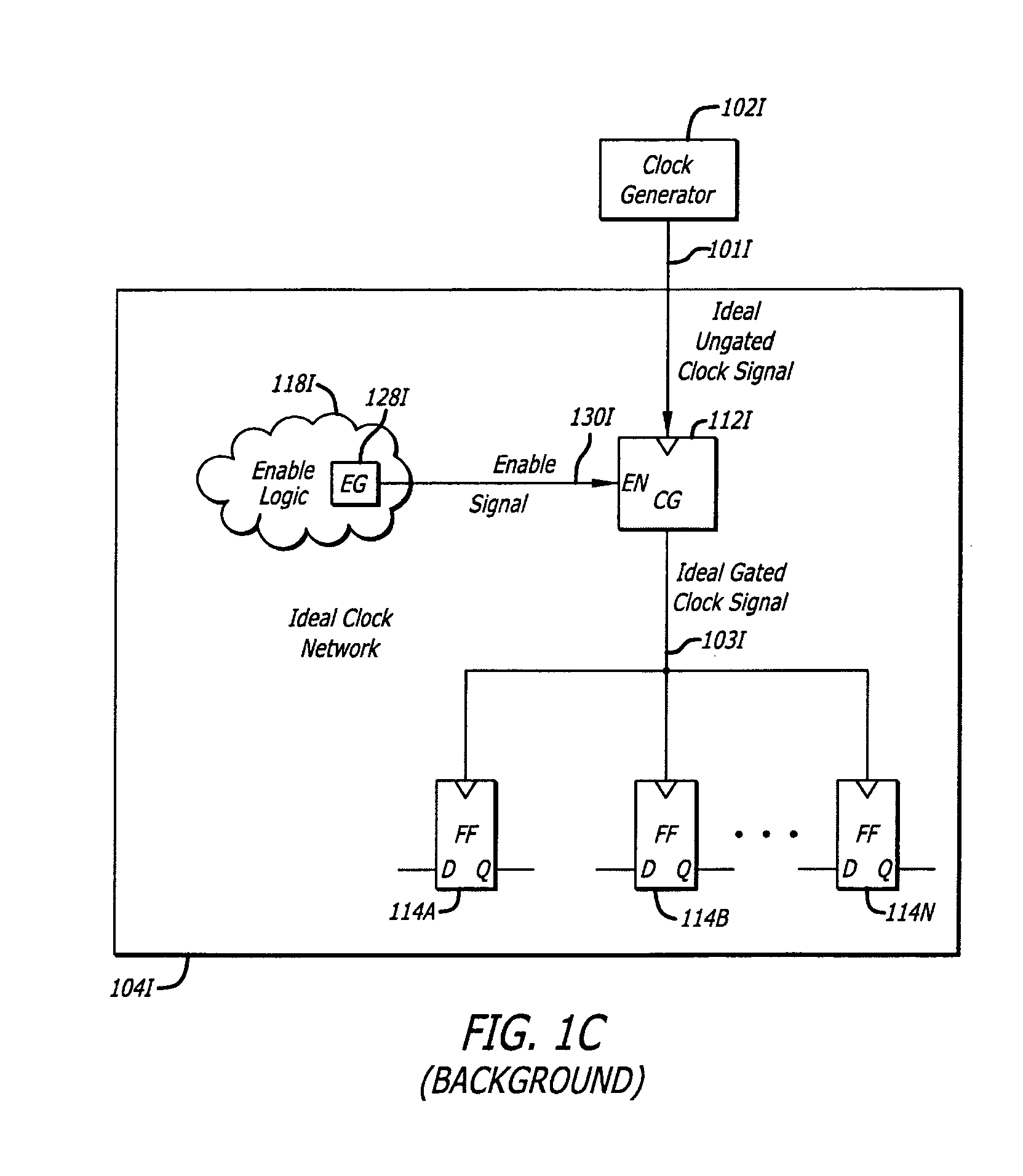Methods for construction and optimization of a clock tree plan for reduced power consumption
a clock tree and power consumption technology, applied in the direction of instruments, software simulation/interpretation/emulation, generating/distributing signals, etc., can solve the problems of increasing common over-aggressive gating, inconvenient estimating of inability to accurately predict timing and power during automatic clock gate insertion, etc., to achieve the effect of improving timing and power consumption, and facilitating the modeling of clock buffers with respect to clock gates
- Summary
- Abstract
- Description
- Claims
- Application Information
AI Technical Summary
Benefits of technology
Problems solved by technology
Method used
Image
Examples
Embodiment Construction
[0064]In the following detailed description of the embodiments of the invention, numerous specific details are set forth in order to provide a thorough understanding of the present invention. However, it will be obvious to one skilled in the art that the embodiments of the invention may be practiced without these specific details. In other instances well known methods, procedures, components, and circuits have not been described in detail so as not to unnecessarily obscure aspects of the embodiments of the invention.
[0065]Note also that the terms flip-flop and register are being used interchangeably herein. That is, each reference to a flip-flop herein also means a register of a plurality of flip-flops that are clocked together by the same clock signal. In a register, each flip flop typically has a data input coupled to a respective data signal to store data bits from a bus of parallel data signals. Accordingly, a reference to a flip-flop herein also means a register of a plurality ...
PUM
 Login to View More
Login to View More Abstract
Description
Claims
Application Information
 Login to View More
Login to View More - R&D
- Intellectual Property
- Life Sciences
- Materials
- Tech Scout
- Unparalleled Data Quality
- Higher Quality Content
- 60% Fewer Hallucinations
Browse by: Latest US Patents, China's latest patents, Technical Efficacy Thesaurus, Application Domain, Technology Topic, Popular Technical Reports.
© 2025 PatSnap. All rights reserved.Legal|Privacy policy|Modern Slavery Act Transparency Statement|Sitemap|About US| Contact US: help@patsnap.com



